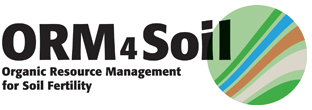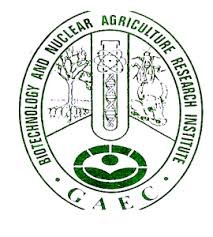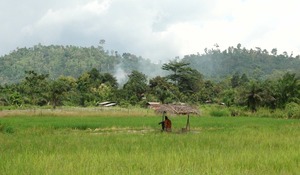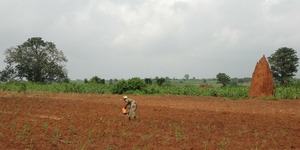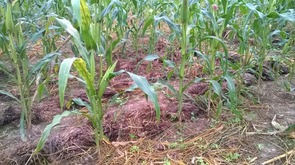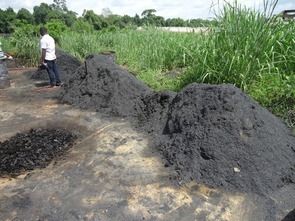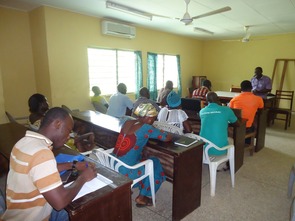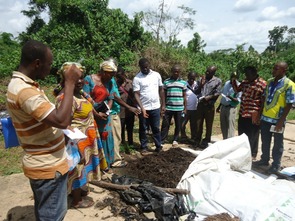National Coordination: Dr. Godfred K. Ofosu-Budu (UG)
Intervention Areas:
- Kade: Humid, semi deciduous forest; Mixed permanent – annual crops
- Sege: Arid coastal savannah; Mixed crops, livestock
University of Ghana
Contact person: Dr. Godfred Ofosu-Budu
Biotechnology and Nuclear Agricultural Research Institute
Contact person: Dr. Daniel Asare
Ghana
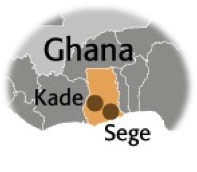
Over-exploitation of soil nutrients and nutrient reserves in the soils of Ghana has resulted in nutrient imbalances on farmers’ fields. Traditional methods of restoring soil fertility, such as fallow, are fading away due to increasing pressure on land for both agricultural and non-agricultural purposes.
Different soil fertility management practices such as application of inorganic fertilizer, combined application of organic and inorganic fertilizers, green manuring, application of animal manures, crop rotation and application of compost have been introduced to farmers over the years. However, the adoption of these practices by farmers remains low.
Kade
Location and Climate: The Kade site is located at 6°08'31.9"N 0°45'43.5"W in the Kwaebibirem district. It is in the forest region and characterized by a bimodal rainfall pattern, with 1200-1400 mm per year.
Main crops: Cocoa, oil palm, rubber, maize, rice, citrus, plantain, cassava, cowpea and some vegetables.
Sege
Location and Climate: The Sege site is located on latitude 5°52'42.8"N 0°21'33.9"E in the coastal savanna agro-ecological zone west of the country's capital, Accra. It is in the coastal savanna agro-ecological zone, with a bimodal rainfall with an annual average of 750 mm.
Main crops: Tomato, pepper, okra, sorghum, maize, water melon and other vegetables.
Field trials
Use of empty fruit bunch, mulching and biochar alone and in combination with mineral fertilizers on maize and cowpea (Kade); and the rate and mode of application of manure in combination with mineral fertilizer rates (Sege)
During the participatory rural appraisal (PRA), carried out in 2015 in the areas of Kade and Sege, it became clear that among other barriers, the bulkiness of compost and the high manual labour involved were major obstacles to the use of organic inputs.
The implemented field trials are based on farmers' concerns and are being developed in collaboration with them, and seek to understand the effect of compost made of residues from cocoa and oil palms (empty fruit bunch) in combination with biochar (from rice husks) and low rates of mineral fertilizers. The team has reported to have reduced the bulkiness of the used material in a significant way.
Innovation platforms
Innovation Platforms (IPs) were installed in February and March 2017 in Kade and Sege.
The IP members were identified on the basis of their knowledge of the principal site-specific problems and their motivation to make changes within the framework of soil fertility build-up while considering the value chains of the main crops in the two sites. Preliminary results from the agronomic trials are brought to the IP discussions so that the different stakeholders can assess their potential for adoptability and scale-up.
As the IP process matures, its setup is expected to proceed to the regional and national levels, engaging different stakeholders and policy makers in an exchange with the ambitious aim to bring soil fertility into the national agenda for agriculture.
 This website was archived on November 30, 2022 and is no longer updated.
This website was archived on November 30, 2022 and is no longer updated.
